What should be the water level in the well: understand the
Many owners of country houses who have their own water supply system on the site are interested in the question: what to do if the water level in the well fell during a long pumping out.
For normal operation of the water supply system and proper selection of the depth of the pump, it is necessary to know as precisely as possible which mark the fluid is in the barrel for in various operating modes.
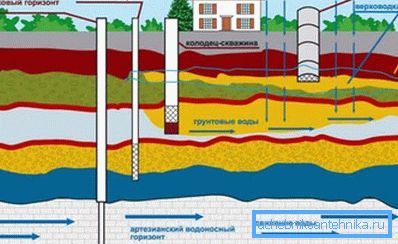
Key aspects of a water well
This article will describe the basic principles of the appearance of water in the well, as well as various factors on which its quantity depends.
In addition, there will be presented a manual describing how to choose the right depth of the submersible pump, as well as tips and recommendations that will help with maximum efficiency to use the water intake system. Also, the reader will be offered measures that should be taken to prevent the pump running without liquid, or in other words, how to avoid a dry run.

Static level
To determine the flow rate of a well, and accordingly, its productivity, it is necessary to know two most important indicators: the static and dynamic level of the fluid inside its wellbore.
The static is the position of the mirror of the water surface, which is installed inside the barrel after the cessation of fluid pumping. Its depth is expressed in the distance from the upper edge of the tip of the trunk to the surface of the water inside the trunk. To accurately determine this value, the measurement of the water level in the well is made after it has been idle for one hour.
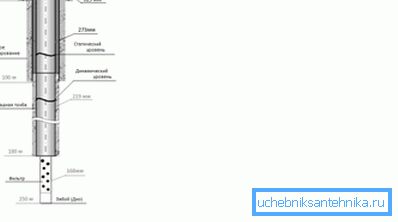
The static water level is established by balancing the bottomhole pressure (pressure of the liquid column inside the barrel) and the reservoir pressure of the underground source. Thus, it is almost always located above the depth of the reservoir, and the greater the difference between them, the higher the productivity of the well or its flow rate.
For a more accurate presentation of the following statements can be made:
- Its height depends only on the pressure inside the reservoir and in no way depends on the physical parameters, such as depth, diameter, location, etc.
- This value is not constant, because the reservoir pressure may vary depending on various circumstances, for example, seasonal changes, increased water withdrawal from the same horizon by neighboring wells, etc.
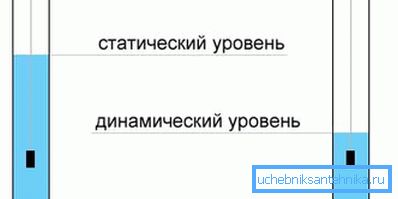
Dynamic level
Dynamic is considered to be the level of fluid in the barrel, which is set at a constant mark in the process of pumping. Its value may vary depending on the performance of the submersible pump.
Its height is set at a constant elevation in the case when the rate of flow of fluid from an aquifer becomes equal to the rate of its pumping.
To determine it, it is necessary to install a submersible pump in the barrel and to pre-pump the water for at least half an hour by constantly monitoring the water level in the well and, if necessary, lowering it until the water line is fixed at a constant level and it does not stop decreasing.
This quantity is characterized by the following features:
- Its value must be determined separately for each pump, depending on its performance.
- Unlike static, the height of the dynamic directly depends on the diameter of the well, because the rate of its decrease during pumping depends on the total volume of the whole fluid. Simply put, the larger the diameter of the casing, the slower will decrease its mark.
- The lower its mark falls, the slower its further decline. This is due to the fact that when it decreases, the bottomhole pressure decreases, and under the influence of reservoir pressure, water enters the barrel with greater speed.
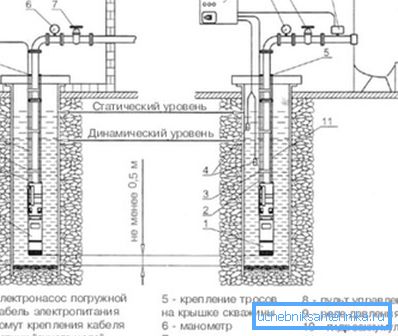
What is debit
The concept of well production is considered to be its ability to produce a certain amount of water over a certain period of time, for example, 10 cubic meters per day, or 3 cubic meters per hour.
In other words, we can say that the smaller the difference between the levels of the static and dynamic levels in the pumping process, the higher the flow rate when using this pump.
In the absence of fluid intake, the flow rate is always zero. This is because the bottomhole pressure inside the barrel becomes equal to the reservoir pressure, and upon the occurrence of these conditions no fluid enters the barrel.
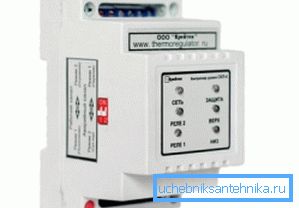
Tip! To control the height of the water column inside the barrel and turn off the pump engine when it is lowered to a critical point when installing water intake equipment, it is recommended to install a water level sensor in the well, which will help to avoid dry running of the engine.
Selection of a submersible pump
Submersible pumps can be of different designs and manufacturers, but mainly they differ among themselves in parameters such as power consumption, head height and performance.
From these qualities, by and large, its price and how much it will satisfy the needs of a country house, therefore, the following points should be taken into account when selecting and installing it:
- Its engine is designed to work under load, so its use is not allowed without immersion in the working fluid.
- To prevent its operation in the dry running mode, it is necessary to mount a water level switch in the well in the pump control unit, which will turn it off when the water level drops below the allowable value.
- When choosing the height of the head, you should take into account the depth of its immersion, the maximum mark of the highest point in the house and the necessary working pressure in the plumbing system.
- As for the maximum performance, it should not exceed 80-85% of the well flow rate. In other words, the maximum difference between the height of the static and dynamic fluid levels in the barrel should not exceed 1 meter.

Tip! When setting up a well and installing water intake equipment with your own hands, the most optimal working position of the pump in the wellbore is to install it at a level from -1 to -2 meters below the dynamic fluid level.
Conclusion
As can be seen from all that has been written, the ability of the water intake system to work in a normal mode for a long time depends on many factors. Therefore, to ensure its efficiency, an integrated approach is needed to address this issue.
If, for any reason, the water level in the well has fallen, first you need to figure out why this happened, and then proceed to solve the problem. Additional information on this issue can be obtained by watching the video in this article or by reading other materials on this topic on our website.